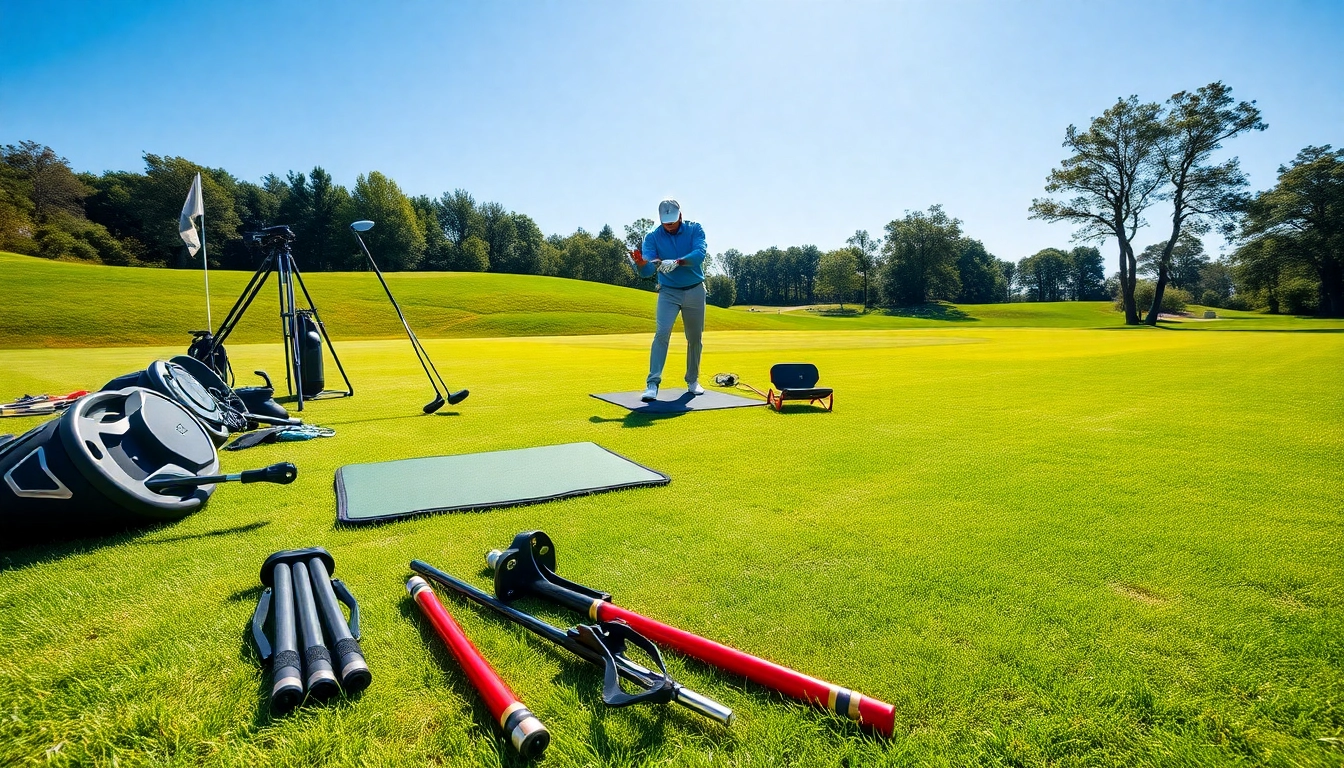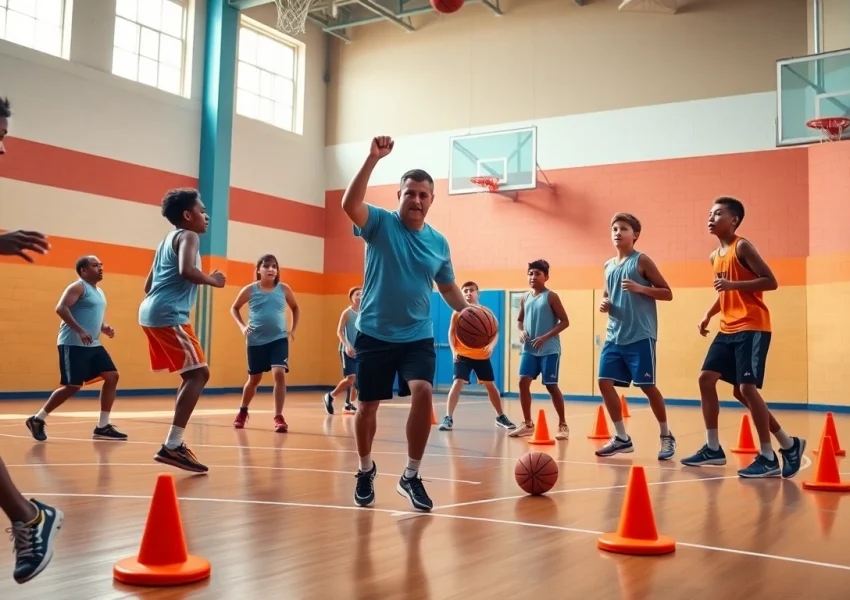Understanding the Importance of Golf Training Aids
Improving your golf game requires more than just practice; it often necessitates the incorporation of specialized tools designed to enhance specific skills or aspects of your game. This is where golf training aids come into play. These devices have been utilized by players of all levels to address a multitude of challenges, from mastering the perfect swing to refining putting precision.
What Are Golf Training Aids?
Golf training aids are specialized equipment designed to help golfers improve their skills, addressing various components of the game including swing mechanics, grip techniques, putting accuracy, and overall performance consistency. They can range from simple tools like alignment sticks to sophisticated devices that use technology to provide feedback on your performance. The goal of these aids is not only to refine skills but also to instill a sense of understanding and awareness regarding your game mechanics.
Benefits of Using Training Aids
The benefits of using golf training aids are manifold. Firstly, they provide immediate feedback, enabling golfers to recognize and correct faults in real-time. Additionally, training aids can offer a structured approach to practice. By having a specific focus, golfers can work more effectively, leading to quicker improvement. Furthermore, these aids can help players of all levels—whether you’re a novice learning the basics or a seasoned professional looking to fine-tune advanced techniques.
Types of Golf Training Aids Available
The golf market is saturated with various training aids designed for specific skills and targeted areas. Here are a few broad categories:
- Swing Trainers: Devices that assist in developing proper swing mechanics through resistance training or guided movements.
- Putting Aids: Tools that help improve stroke technique and accuracy, including alignment devices and putting mats.
- Grip Aids: Instruments focused on helping golfers establish a consistent grip, which is foundational for effective swings.
- Physical Conditioning Aids: Items designed to improve flexibility, strength, and fitness relevant to golfing performance.
Choosing the Right Golf Training Aids for Your Needs
With so many options available, selecting the right training aids can be overwhelming. It’s important to take a systematic approach that considers your personal needs and objectives.
Assessing Your Skill Level
The first step in choosing effective golf training aids is to evaluate your current skill level. Understanding where you stand will inform the kinds of aids you should consider. Beginners may benefit from basic swing trainers or grip aids to help establish a solid foundation, while experienced golfers might look for advanced aids that offer specific insights into their swing or putting mechanics.
Identifying Your Areas for Improvement
Once you’ve assessed your current skills, the next step is identifying areas that need improvement. Conducting practice sessions with a focus on specific aspects of your game can reveal where you struggle the most. For instance, if you frequently miss short putts or lack distance control, a dedicated putting aid might be beneficial. Alternatively, if you find inconsistencies in your swing, a swing trainer can help you develop a more reliable technique.
Budget Considerations for Training Aids
Golf training aids vary significantly in price. While some may be available for the price of a round of golf, others can be quite expensive. Consider your budget but remember that investing in quality training aids can lead to substantial improvements in your game. Moreover, weigh the longevity of the product against its price; a more expensive aid might provide better long-term value if it consistently helps you improve.
How to Incorporate Golf Training Aids into Your Practice
Once you’ve selected the appropriate training aids for your needs, integrating them into your practice routine effectively is crucial for realizing their benefits.
Creating a Structured Practice Routine
To make the most of your training aids, develop a structured practice routine. Allocate specific time slots to work with each aid, ensuring that your practice is focused and goal-oriented. Instead of haphazardly hitting balls, dedicate parts of your session to using aids that address specific skills. A clear routine enhances retention and fosters improvement.
Combining Aids with Traditional Training
While training aids are valuable, they should complement rather than replace traditional practice methods. Balance your sessions between using aids and practicing on the course or range without them. This combination will help reinforce what you learn and develop muscle memory effectively.
Monitoring Your Progress
Tracking your progress is essential to ensure that the use of training aids is translating into real-world skill development. Keep a practice journal or utilize mobile apps to record your performance. Regular assessments can help you gauge the effectiveness of the aids and adjust your training accordingly.
Top Picks for Effective Golf Training Aids
To assist you in your search for quality golf training aids, we’ve compiled a list of top picks based on performance, user reviews, and versatility. Incorporating any of these options into your practice can help elevate your game.
Review of Popular Swing Trainers
Popular swing trainers like the Orange Whip or the SKLZ Gold Flex aim to refine swing mechanics and build strength. The Orange Whip’s flexible shaft allows golfers to develop a smooth and rhythmic swing by promoting balance and tempo. In contrast, the SKLZ Gold Flex offers both swing training and stretching benefits, making it an excellent tool for versatile practice.
Best Putting Aids for Precision
For precision in putting, products like the Perfect Practice Putting Mat or the PuttOUT Pressure Putt Trainer have gained significant acclaim. The putting mat provides a consistent surface to practice, while the PuttOUT Trainer incorporates feedback by returning only successful putts, helping users develop confidence in their stroke.
Innovative Accessories to Enhance Your Game
Accessories such as alignment sticks and weighted clubs are also integral to comprehensive golf training. Alignment sticks help golfers visualize their alignment, enhancing setup and aim. Weighted clubs assist in building strength and improving swing mechanics effectively, making them a popular choice among golfers looking to refine their game.
Evaluating Performance and Results from Training Aids
The ultimate goal of integration training aids into your practice is to see measurable results. Evaluating performance over time will ensure that your efforts translate into tangible improvements on the course.
Measuring Skill Improvement Over Time
Set clear benchmarks to track your performance before and after incorporating training aids. Common metrics include score averages, accuracy stats, and consistency in swing mechanics. By comparing these statistics over time, you’ll be able to identify the specific impacts of your training aids on your overall game.
Using Feedback to Fine-tune Your Training
Feedback isn’t just from performance metrics; it’s also about listening to your body and reviewing video footage of your swings. Many advanced training aids provide data-driven insights which can be invaluable. Utilize this information to adjust your approach and refine your training routines further.
Success Stories from Golfers Who Use Training Aids
Numerous success stories illustrate how golfers have transformed their game through the strategic use of training aids. For instance, amateur players have documented significant reductions in their handicap after consistent practice with swing trainers and putting aids. Similarly, professionals attribute their breakthroughs to diligently using technology-driven aids, underscoring the importance of these tools in both recreational and competitive settings.






